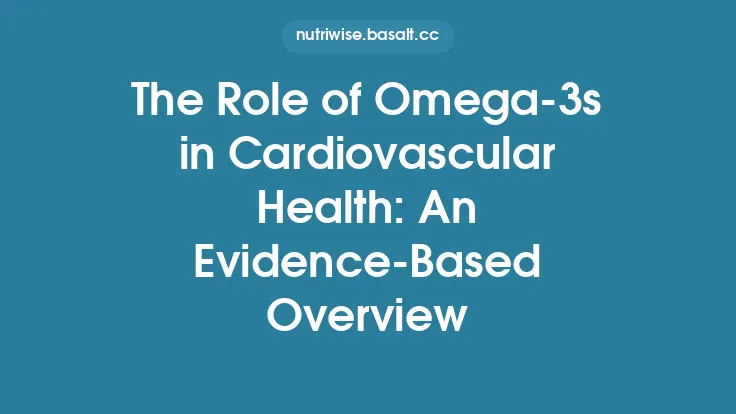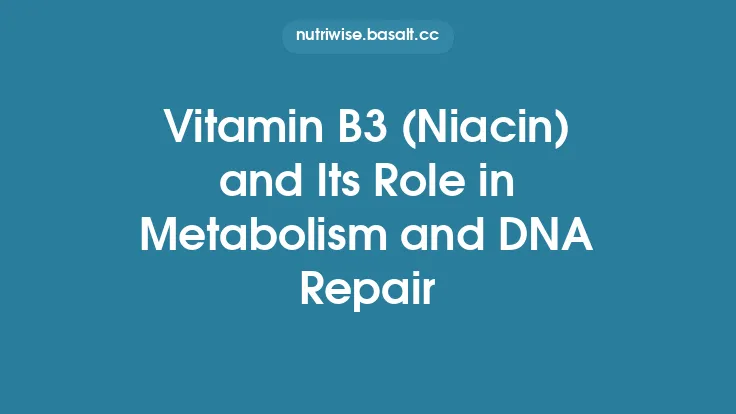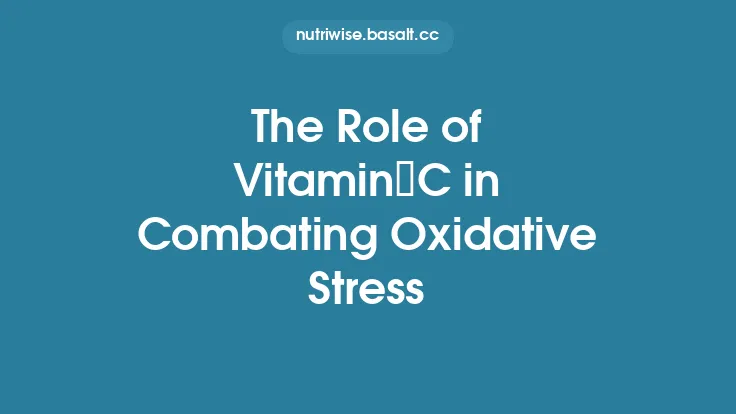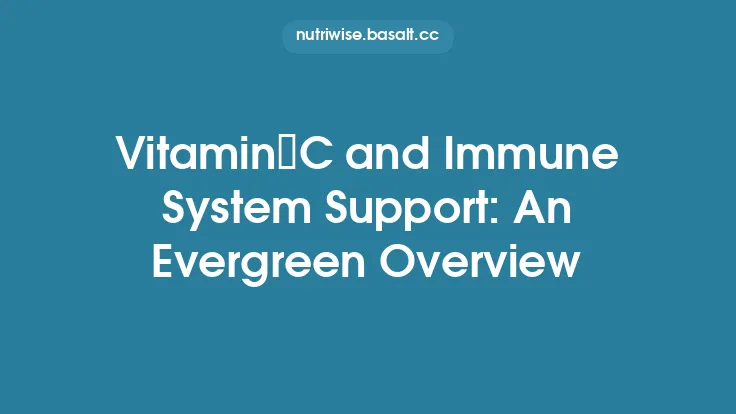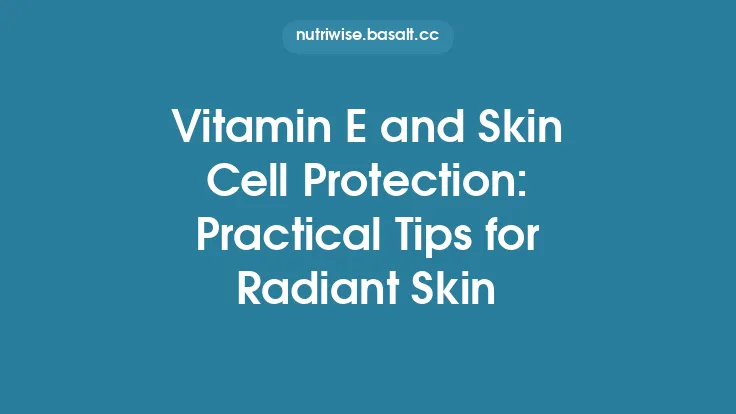Vitamin E is a family of eight fat‑soluble compounds—four tocopherols and four tocotrienols—that together constitute one of the most versatile micronutrients in human biology. While its reputation has long been tied to antioxidant activity, a growing body of research reveals that Vitamin E’s contribution to cellular protection extends far beyond simple free‑radical scavenging. By influencing membrane dynamics, modulating signaling cascades, supporting mitochondrial health, and shaping immune cell function, Vitamin E helps maintain the integrity and resilience of cells throughout the body. This overview synthesizes current knowledge on how Vitamin E operates at the cellular level, emphasizing mechanisms that are broadly relevant across tissues and life stages.
Molecular Structure and Bioavailability
The eight vitamers of Vitamin E share a chromanol ring that can donate a hydrogen atom, but they differ in the saturation of their side chains (saturated in tocopherols, unsaturated in tocotrienols) and in the position of methyl groups on the ring (α, β, γ, δ). These structural nuances affect both antioxidant potency and tissue distribution.
Absorption begins in the small intestine, where bile salts emulsify dietary lipids and facilitate incorporation of Vitamin E into mixed micelles. Enterocytes package the vitamin into chylomicrons, which enter the lymphatic system and eventually the circulation. From there, Vitamin E is transferred to various lipoprotein fractions (VLDL, LDL, HDL) and delivered to peripheral tissues. The hepatic α‑tocopherol transfer protein (α‑TTP) preferentially binds α‑tocopherol, ensuring its predominance in plasma and cellular stores. Genetic variations in α‑TTP or disorders affecting lipoprotein metabolism can markedly alter tissue Vitamin E status, underscoring the importance of transport mechanisms for cellular protection.
Cellular Distribution and Localization
Once in the bloodstream, Vitamin E partitions into lipid bilayers according to its lipophilicity. Within cells, the vitamin is most abundant in membranes rich in polyunsaturated fatty acids (PUFAs)—including the plasma membrane, endoplasmic reticulum, and mitochondrial inner membrane. Its location is not random; the chromanol ring aligns near the lipid head‑group region, while the hydrophobic side chain embeds within the fatty‑acid core. This orientation enables Vitamin E to intercept lipid peroxyl radicals that arise during normal metabolic activity, but it also positions the molecule to influence membrane fluidity, curvature, and protein function.
Beyond membranes, a smaller fraction of Vitamin E resides in the cytosol bound to specific carrier proteins, and trace amounts have been detected in the nucleus. These non‑membrane pools suggest additional roles in intracellular signaling and gene regulation that are independent of direct lipid protection.
Mechanisms of Cellular Protection Beyond Direct Antioxidant Action
Although Vitamin E’s capacity to quench lipid peroxyl radicals is well documented, its protective repertoire includes several non‑antioxidant mechanisms:
- Modulation of Membrane Fluidity – By inserting into phospholipid bilayers, Vitamin E can prevent excessive rigidity caused by saturated fatty acids or, conversely, limit hyper‑fluidity induced by high PUFA content. This balance is crucial for the optimal function of membrane proteins such as receptors, ion channels, and transporters.
- Stabilization of Lipid Rafts – Lipid rafts are microdomains enriched in cholesterol and sphingolipids that serve as platforms for signal transduction. Vitamin E’s presence within these rafts helps maintain their structural integrity, thereby ensuring reliable downstream signaling.
- Inhibition of Enzyme‑Mediated Lipid Peroxidation – Certain lipoxygenases and cyclooxygenases generate lipid hydroperoxides as part of normal physiology. Vitamin E can allosterically modulate these enzymes, reducing the formation of potentially harmful lipid oxidation products.
- Regulation of Protein Kinase Activity – Studies have shown that Vitamin E can influence the activity of protein kinase C (PKC) isoforms, which are pivotal in controlling cell proliferation, differentiation, and apoptosis. By attenuating aberrant PKC activation, Vitamin E contributes to cellular homeostasis.
- Anti‑Inflammatory Signaling – Vitamin E interferes with the activation of nuclear factor‑κB (NF‑κB), a transcription factor that drives the expression of pro‑inflammatory cytokines. This effect is mediated partly through the inhibition of upstream kinases and partly through modulation of membrane receptors involved in inflammatory cascades.
Collectively, these actions illustrate how Vitamin E serves as a “molecular sentinel,” preserving cellular architecture and signaling fidelity under both basal and stress conditions.
Role in Mitochondrial Integrity and Energy Metabolism
Mitochondria are the powerhouses of the cell, but their oxidative phosphorylation machinery also generates reactive oxygen species (ROS) as by‑products. The inner mitochondrial membrane (IMM) is densely packed with cardiolipin, a phospholipid highly susceptible to peroxidation. Vitamin E’s accumulation in the IMM provides a frontline defense against cardiolipin oxidation, which is essential for maintaining the efficiency of the electron transport chain (ETC).
Beyond direct lipid protection, Vitamin E influences mitochondrial dynamics:
- Prevention of Mitochondrial Permeability Transition (MPT) – By stabilizing membrane lipids, Vitamin E reduces the likelihood of MPT pore opening, a critical event that can trigger apoptosis.
- Support of ATP Synthesis – Preserved membrane integrity ensures optimal proton gradient formation, thereby sustaining ATP production.
- Regulation of Mitophagy – Emerging evidence suggests that Vitamin E can modulate the signaling pathways (e.g., PINK1/Parkin) that govern selective removal of damaged mitochondria, contributing to overall cellular quality control.
These mitochondrial actions are especially relevant in tissues with high energetic demand, such as cardiac muscle, brain, and skeletal muscle, where subtle declines in mitochondrial efficiency can precipitate functional impairment.
Influence on Cellular Signaling and Gene Regulation
Vitamin E interacts with several nuclear receptors and transcription factors, thereby shaping gene expression patterns that affect cell survival, proliferation, and differentiation.
- Peroxisome Proliferator‑Activated Receptors (PPARs) – Vitamin E can act as a ligand or co‑activator for PPARγ, a receptor involved in lipid metabolism and adipogenesis. Activation of PPARγ by Vitamin E promotes the expression of genes that enhance fatty‑acid oxidation and improve insulin sensitivity.
- Nuclear Factor‑Erythroid 2‑Related Factor 2 (Nrf2) – While Nrf2 is traditionally linked to the induction of antioxidant enzymes, Vitamin E has been shown to facilitate Nrf2 nuclear translocation, amplifying the cellular antioxidant response indirectly.
- Cell Cycle Regulators – Vitamin E modulates cyclin‑dependent kinases (CDKs) and cyclin expression, influencing the progression from G1 to S phase. This regulation helps prevent uncontrolled cell proliferation, a hallmark of oncogenic transformation.
- Apoptotic Pathways – By affecting the balance between pro‑apoptotic (Bax, Bad) and anti‑apoptotic (Bcl‑2, Bcl‑XL) proteins, Vitamin E can tilt the cellular decision toward survival under mild stress, while still permitting apoptosis when damage is irreparable.
Through these pathways, Vitamin E exerts a systemic influence that extends far beyond its chemical antioxidant capacity, integrating metabolic cues with protective gene networks.
Vitamin E in Immune Cell Function
Immune cells—particularly lymphocytes, macrophages, and neutrophils—rely on rapid membrane remodeling and signaling to mount effective responses. Vitamin E’s incorporation into immune cell membranes enhances several functional aspects:
- Phagocytic Efficiency – Macrophages enriched with Vitamin E display improved engulfment of pathogens, likely due to optimized membrane fluidity and receptor clustering.
- Cytokine Production – Vitamin E modulates the secretion profile of cytokines such as interleukin‑2 (IL‑2) and interferon‑γ (IFN‑γ), supporting a balanced Th1/Th2 response.
- Lymphocyte Proliferation – Adequate Vitamin E levels correlate with robust T‑cell proliferation upon antigenic stimulation, a process that depends on intact signaling cascades and membrane integrity.
- Oxidative Burst Regulation – While the oxidative burst is essential for microbial killing, uncontrolled ROS can damage host tissues. Vitamin E helps fine‑tune this burst, ensuring effective pathogen clearance without excessive collateral damage.
These immunomodulatory effects underscore Vitamin E’s role in maintaining a vigilant yet controlled cellular defense system.
Implications for Age‑Related Cellular Decline
Aging is accompanied by cumulative oxidative stress, mitochondrial dysfunction, and dysregulated signaling—all processes in which Vitamin E is a key participant. Epidemiological and experimental studies suggest that maintaining adequate cellular Vitamin E status can:
- Mitigate Lipid Peroxidation Accumulation – By limiting the buildup of oxidized lipids, Vitamin E helps preserve membrane function in long‑lived cells such as neurons and cardiomyocytes.
- Support Mitochondrial Biogenesis – Vitamin E influences the expression of peroxisome proliferator‑activated receptor‑γ coactivator‑1α (PGC‑1α), a master regulator of mitochondrial replication and function.
- Delay Cellular Senescence – Through modulation of the p53/p21 pathway and reduction of chronic low‑grade inflammation (inflammaging), Vitamin E can postpone the onset of senescent phenotypes.
- Preserve Cognitive Function – In animal models, Vitamin E supplementation has been linked to improved synaptic plasticity and reduced age‑related memory decline, likely via combined mitochondrial and signaling benefits.
While Vitamin E is not a panacea for aging, its multifaceted protective actions make it a valuable component of strategies aimed at sustaining cellular vitality over the lifespan.
Research Perspectives and Emerging Applications
Current investigations are expanding the understanding of Vitamin E’s cellular roles in several cutting‑edge areas:
- Nanocarrier Delivery Systems – Encapsulation of tocotrienols in liposomes or polymeric nanoparticles aims to enhance tissue targeting, especially for neuroprotective applications where the blood‑brain barrier limits conventional delivery.
- Synergistic Interactions with Endogenous Antioxidants – Although the present article avoids detailed discussion of interactions, emerging data suggest that Vitamin E can up‑regulate endogenous antioxidant enzymes (e.g., superoxide dismutase, glutathione peroxidase) through transcriptional mechanisms.
- Precision Nutrition – Genomic profiling of α‑TTP variants and lipid metabolism genes may enable personalized recommendations for Vitamin E intake to optimize cellular protection in at‑risk populations.
- Therapeutic Adjuncts in Metabolic Disorders – Preliminary trials are evaluating Vitamin E’s capacity to improve insulin signaling and reduce hepatic steatosis by modulating PPAR pathways and mitochondrial function.
These avenues highlight the evolving appreciation of Vitamin E as a versatile modulator of cellular health, beyond its classic antioxidant label.
Practical Considerations for Maintaining Adequate Cellular Levels
Ensuring that cells have sufficient Vitamin E hinges on several lifestyle and physiological factors:
- Balanced Dietary Patterns – Consuming a variety of plant‑based oils, nuts, seeds, and whole grains provides a natural mix of tocopherols and tocotrienols. The relative proportion of each vitamer can influence tissue distribution.
- Fat Digestion Efficiency – Adequate bile production and pancreatic lipase activity are essential for micelle formation and subsequent absorption. Conditions that impair fat digestion (e.g., chronic pancreatitis, certain bariatric surgeries) may reduce Vitamin E bioavailability.
- Lipoprotein Health – Since Vitamin E travels bound to lipoproteins, disorders that alter LDL or HDL concentrations can affect delivery to peripheral tissues. Managing cholesterol levels through diet and physical activity indirectly supports Vitamin E transport.
- Avoidance of Excessive Oxidative Stressors – Chronic exposure to high levels of environmental pollutants, tobacco smoke, or intense ultraviolet radiation can deplete cellular Vitamin E stores faster than they can be replenished.
- Age‑Related Changes – Absorption efficiency and α‑TTP activity tend to decline modestly with age, making dietary vigilance more important in older adults.
By attending to these factors, individuals can help maintain the intracellular reservoirs of Vitamin E that underpin the diverse protective mechanisms described above.
